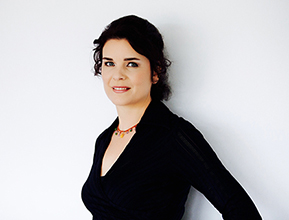What is ritual?
Rituals create a sacred space of purposeful intention and ceremony. People affected by cancer can use ritual as a form of mind-body-spirit support.
“Rituals mark the major, collectively observed gateways to endings and beginnings… Rituals are outer expressions of interior experience.”
-Jean Shinoda Bolen, MD, Close to the Bone
What is the relationship between rituals and spirituality?
“A life-threatening illness is also a transition and an initiation into a phase of life that is precipitated by changes in the body. With the onset, there are events and crises with physical and spiritual consequences. There are major changes in roles, and there is need for emotional and spiritual sustenance for all concerned—all of which makes this medically mandated situation a time when ritual can make a difference to the soul. For example, entering a hospital to undergo a surgical or medical procedure that has life-or-death consequences is a soul event, and rituals that acknowledge this provide psychological and spiritual support that help keep body and soul together through this passage.”
-Jean Shinoda Bolen, MD, Close to the Bone
Who participates in rituals?
Rituals can be private, shared with another person, or a group. The act of ritual with another person or people is a gathering together to witness, acknowledge, and support a significant passage related to cancer and other life experiences.
What are some forms of ritual?
Some forms of ritual are more ordinary to everyday life and others more extraordinary. The importance of the ritual is not defined by whether or not it is common versus uncommon. The levels of meaning are related to the degree to which the act of ritual comes from the soul. Many rituals incorporate some form of symbolism. For example, a person might plant a bush in their garden to signify new life, or bury an item somewhere special in nature signifying what they want to release. People affected by cancer can cultivate rituals that are meaningful to them based on the current circumstances of their life.
Some potential components of a ritual might include the following.
- Lighting a candle

- Sound of a bell
- Moment or period of silence
- Reading meaningful writing
- Storytelling
- Prayer
- Dance
- Singing
- Aromatherapy
- Burning incense
- Burning a piece of paper with what you want to release
- Planting flowers, a tree, or even an item you’ve created
- Painting
- Other types of art
- Mask
- Bath
- Cup of tea
How do I create my own ritual?
Decide what you want to honor in the ritual. You might want to meditate for guidance about the purpose, content, and design of the ritual.
- What do you want to focus on as a beginning or ending at this point in your life?
- What do you want to pray for through a ritual?
- What acts in the ritual would be especially meaningful to you?
- Do you want to do it alone, with another person, or a group of people?
- Where do you want to perform the ritual?
What are some examples of rituals for cancer patients?
A woman with breast cancer began losing her hair during chemotherapy. With a group of friends, she organized a ritual. They created a healing environment with gentle music, candles, and aromatherapy. Together they sat in a circle and wrote blessings on ribbons, which were then woven into small braids all over her head. One by one, her friends blessed her before shaving her head.
A woman with a brain tumor was preparing for brain surgery. Her friends organized a celebration before the procedure. They spontaneously gathered in the kitchen where many of her friends shaved a portion of her hair. Afterwards each person stroked her head. The hairs were collected into a jar. Years after the surgery, the woman released her hairs into the sea with a prayer.
A man with prostate cancer reflected on what he wanted to release in his life. He worked on identifying his pain through the support of a healer and felt it very strongly during his sessions where he expressed deep rage and sadness regarding a family member. In a private ritual, he wrote his pain and wishes on a piece of paper. He then lit a fire, crumpled the paper, and threw it in the flames. Sitting in silence, the man prayed.
For More Information
- Close to the Bone: Life-Threatening Illness as a Soul Journey by Jean Shinoda Bolen, MD





